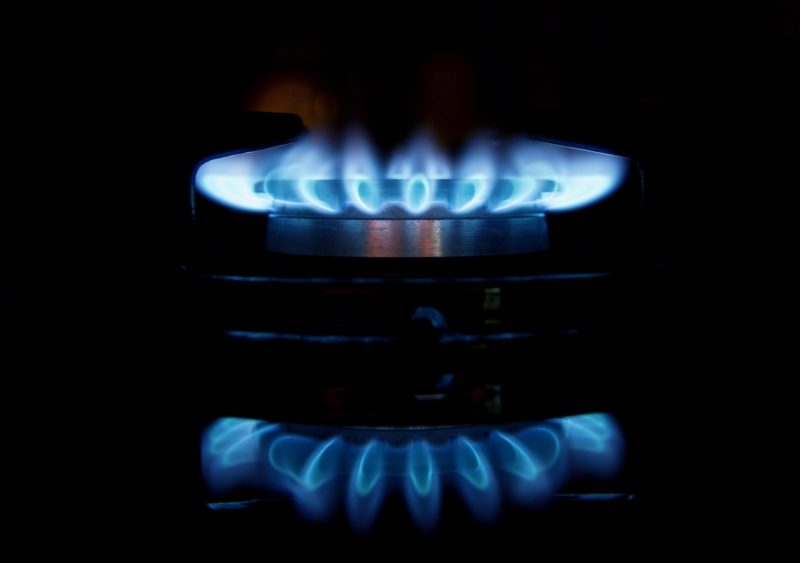Are you wondering how does ventless gas heater work? Stop wondering; you come to the right place at the right time. Heaters with no venting to the outdoors are known as ventless gas heaters.
Conversely, the oxygen required to fuel the complete combustion generating heat is drawn from the air within the room where the unit is installed, and the heat produced is vented straight out of the device.
Ventless heaters are far more effective than standard heating systems since there is no exterior air exchange, so most typical heaters lose the bulk of their heat. However, there are certain disadvantages and restrictions to be aware of. Ventless heaters are economical and straightforward to install since they do not require a vent pipe or chimney. Many warmers don’t need power, making them ideal for use in an urgent situation. Keep reading to learn more.
How Ventless Gas Heater Works
So, how does ventless gas heater work? The gas heaters without vents are single-room heaters; oxygen is used in the room to power the complete combustion, which aids in the efficient production of heat. You’ll typically find the gadget placed on the wall, so you’ll be capable of turning it on and off however you choose. Some people use these gadgets to heat the downstairs or multiple areas when socializing.
This is an excellent illustration of using a ventless gas heater correctly. Using the heater when you are napping or leaving the house is an example of improper usage. The reality is that ventless heaters are super safe, cost-effective to run, and have been proved to fulfill today’s stringent air quality regulations whenever correctly designed and serviced. And so, as long as people desire energy-efficient products, vent-free devices have a promising future.
Working Principle Of Ventless Gas Heater
Traditional heaters rely on an unrestricted flow of outside air to maintain combustion since all combustion heaters receive enough oxygen for the process of combustion. Furthermore, sure combustion heaters, including pellet burners and wood-burning stoves, don’t burn their fuel source entirely. As a result of the burning process, smoke is produced into the air; this should be vented back into the outside atmosphere, which can evaporate, but the downside is that most of the heat is also vented.
Finally, burning any chemical almost always produces carbon monoxide, which is considered toxic to people and pets and can lead to death if discharged into a stale space. Though gas heaters operate more effectively than wood or pellet heaters, the carbon monoxide produced has traditionally necessitated the installation of an exterior air vent to keep the unit safe to use. On the other hand, ventless gas heaters do not require a flue; instead, they simply direct the hot combustion exhaust into the area in which they are installed, resulting in a far more efficient heat source.
Advantages Of Ventless Gas Heater
Ventless gas heaters are among the most effective equipment for heating rooms in a house since they are not linked to the outside air; as usual, ventless heaters run at about 100% efficiency. Furthermore, because they burn virtually the whole of their sources of fuel continuously, oil and gas are among the neatest heating choices available, creating far less hazardous pollutants. You may also be interested to know about ventless propane heaters and their pros and cons.
Disadvantages Of Ventless Heater
The risks of utilizing ventless gas heaters were numerous and contentious, so several jurisdictions, like Texas and Boston, prohibit their usage. Asphyxia occurs when the air within a well-sealed home is deprived of oxygen, or carbon monoxide poisoning occurs when minute quantities of carbon monoxide grow over time in a well-sealed home, reaching hazardous and perhaps fatal levels. Even though these risks must be handled carefully, open fires release significantly more significant quantities of these chemicals. Finally, as a component of their exhaust, ventless gas heaters produce water vapor, which increases moisture in space or residence and can cause mold or mildew to develop in all areas.
How To Safely Use Ventless Heater?
These little heaters were highly efficient. These may warm a room in a couple of moments, but they’re not designed for prolonged use or heating many rooms. These were intended only to be used if required under the continual guidance of an expert. It’s also vital to open windows while using a heater because they’re ventless, so they don’t bring in clean air from outside when heating. This heater draws in oxygen & emits carbon dioxide during the combustion chamber.
This would take a little time, but the heater might eventually deplete all the oxygen inside the space, making breathing more hard. On the other hand, water vapor is a more dangerous byproduct of these heaters. This isn’t dangerous for you, but it might be bad for the house. Such water vapors might cause mold or mold to grow on objects in the space over time. To avoid this situation, open the window to allow fresh air to circulate while using this kind of heater.
It’s A Wrap!
We are delighted to know that you have learned how does ventless gas heater work. The ventless gas heaters do not require a flue; instead, they simply direct the hot combustion exhaust into the area in which they are installed, resulting in a far more efficient heat source. Don’t hesitate to know these things too; read about natural gas air conditioners how it works and which is better blue flame or infrared heater. Thank you, friends, for staying with us.

